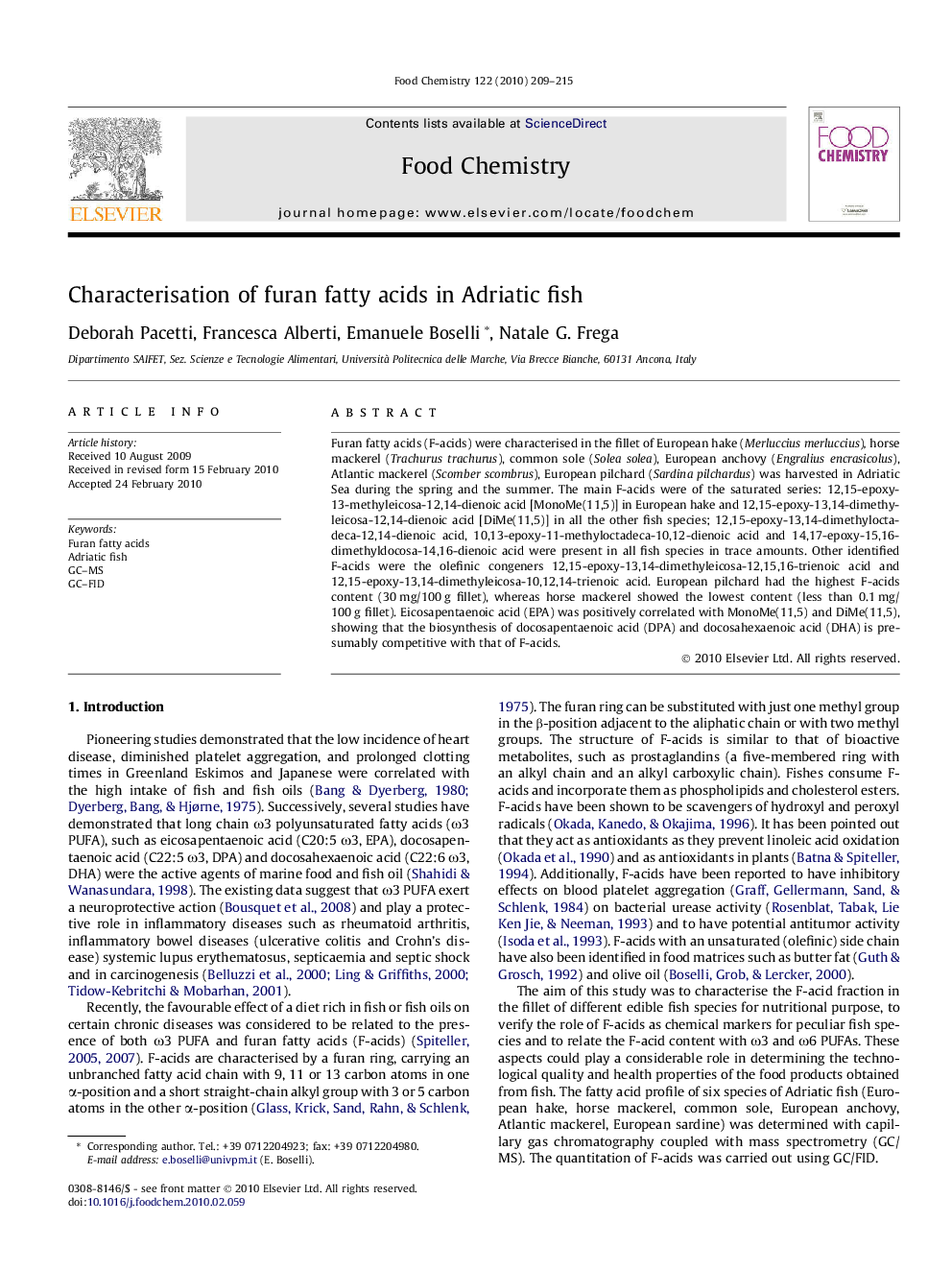| Article ID | Journal | Published Year | Pages | File Type |
|---|---|---|---|---|
| 1186177 | Food Chemistry | 2010 | 7 Pages |
Furan fatty acids (F-acids) were characterised in the fillet of European hake (Merluccius merluccius), horse mackerel (Trachurus trachurus), common sole (Solea solea), European anchovy (Engralius encrasicolus), Atlantic mackerel (Scomber scombrus), European pilchard (Sardina pilchardus) was harvested in Adriatic Sea during the spring and the summer. The main F-acids were of the saturated series: 12,15-epoxy-13-methyleicosa-12,14-dienoic acid [MonoMe(11,5)] in European hake and 12,15-epoxy-13,14-dimethyleicosa-12,14-dienoic acid [DiMe(11,5)] in all the other fish species; 12,15-epoxy-13,14-dimethyloctadeca-12,14-dienoic acid, 10,13-epoxy-11-methyloctadeca-10,12-dienoic acid and 14,17-epoxy-15,16-dimethyldocosa-14,16-dienoic acid were present in all fish species in trace amounts. Other identified F-acids were the olefinic congeners 12,15-epoxy-13,14-dimethyleicosa-12,15,16-trienoic acid and 12,15-epoxy-13,14-dimethyleicosa-10,12,14-trienoic acid. European pilchard had the highest F-acids content (30 mg/100 g fillet), whereas horse mackerel showed the lowest content (less than 0.1 mg/100 g fillet). Eicosapentaenoic acid (EPA) was positively correlated with MonoMe(11,5) and DiMe(11,5), showing that the biosynthesis of docosapentaenoic acid (DPA) and docosahexaenoic acid (DHA) is presumably competitive with that of F-acids.
